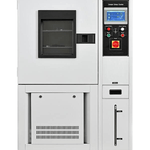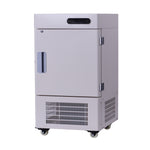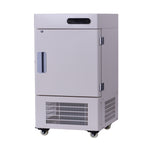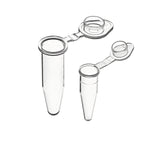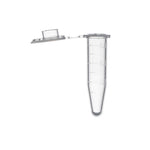You have no items in your shopping cart.

Nowadays, so many types of centrifuges are on the market, such as benchtop, hematocrit, highspeed, and micro centrifuges. They have easily become one of the most important commonly used lab devices around the world, helping scientists separate liquids of different densities, or separate solids from liquids. With the importance that it holds today in the scientific field, it might be a bit bizarre to think that the first iteration of centrifuge was invented for a stock farm to separate cream from milk in 1878 by Antonin Prandtl.
Following the invention of cream separator, a Swiss scientist, Friedrich Miescher became the first scientist isolate nucleic acids with centrifugal force and named his discovery “nuclein”, now better known as DNA, in 1869. Miescher’s discovery ignited the interest for centrifugal force and accelerated the research and development process for the invention of the first continuous centrifugal separator merely 10 years later in 1879 by Swedish engineer Gustaf de Laval, who took inspiration from Prandtl’s design and later added turbines powered by steam in 1883. It was able to run at the speed of 30,000 – 40,000 revolutions per minute, became a best-seller at rapid speed, and won De Laval many awards. His invention greatly shook up the dairy industry and the became the foundation of the practices that the industry still uses to this day.
The next major evolution of the centrifuge machine happened during the 1920s when Swedish chemist Theodor Svedberg invented an ultracentrifuge that could reach up ton 900,000 xg. At the time, most of other machines were only capable of reaching around 260,000 xg, so Svedberg’s invention truly was groundbreaking. Svedberg utilized his invention as an analytical instrument to study the subunit structures and weights of highly complexed proteins. He later earned his first Nobel Prize for Chemistry in 1926 for his work in colloid chemistry and the invention of the revolutionary ultracentrifuge.
For as revolutionary as the invention of Svedberg’s ultracentrifuge was, it was only able to be used as an analytical tool. Due to the built-in horizontal rotor axis, it was nearly impossible to use it as a preparative instrument. In the 1930s, Emile Henriot discovered the capability of compressed air with a bearingless top to generate high rotational velocity during the centrifugal process. Her independent work helped bridge the gap of high velocity of the ultracentrifuge and the more common usages of preparational instruments.
Around the same time, American physicists at the University of Virginia, Jesse Beams, utilized magnetism to create a vacuum ultracentrifuge that achieved even greater speed than Svedberg’s invention. Beams’s creation was later refined by his graduate student, Edward Pickels, together with Johannes Bauer, to try to isolate and filter viruses. Pickels also invented a version of ultracentrifuge that was driven by electricity, making it much more convenient to operate. In 1942, Pickels cofounded Spinco, and introduced to the market a preparative instrument that was able to reach up to 40,000 rotations per minutes in 1949. Throughout this time, his mentor Beams also worked on the Manhattan Project to isolate uranium U-235 in an attempt to win the world-first for nuclear weapons with the help of gas centrifuge, which later became classified in the 1960s.
In 1962, the German company Netheler & Hinz Medizintechnik invented the first microcentrifuge, which ultimately lead to the invention of personal centrifuges in the 2000s. Microcentrifuge remains popular to this day due to its compact size that allows it to fit anywhere in a modern lab where people often have to share bench space with others.


